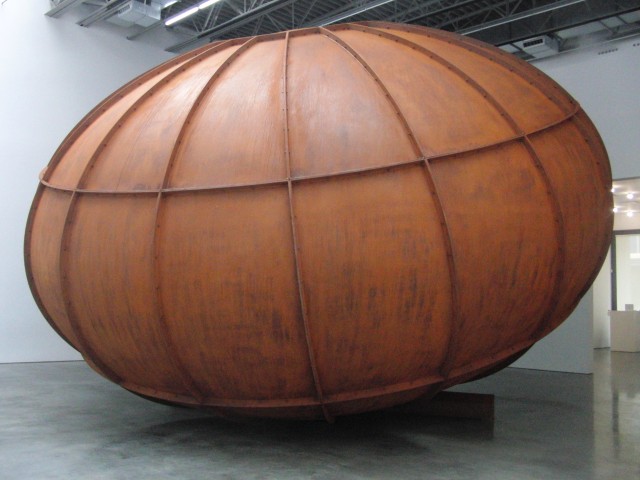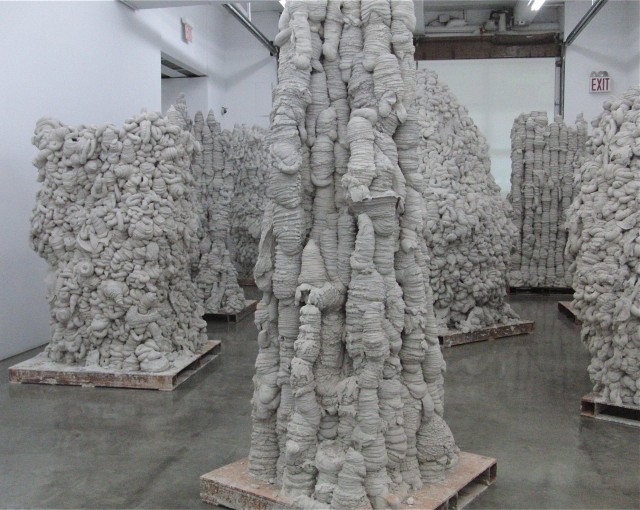
Anish Kapoor’s monumental Cor-Ten steel creation fills Gladstone’s 21st St. space (photo by twi-ny/mdr)
Gladstone Gallery
515 West 24th St., 530 West 21st St.
Tuesday – Saturday through June 9, free, 10:00 am – 6:00 pm
www.gladstonegallery.com
anish kapoor slideshow
In May 2008, Mumbai-born, London-based sculptor Anish Kapoor inaugurated Gladstone’s second Chelsea space with a solo show at both of the gallery’s locations. He is now back at 515 West 24th St. and 530 West 21st St. with a pair of very different exhibits that continues his exploration of materiality, mass, and form. Best known for such large installations as “Memory,” which blocked off Guggenheim visitors in early 2010, “Sky Mirror,” which dazzled people at Rockefeller Center in fall 2006, and the monumental reflective “Cloud Gate” (familiarly known as “The Bean”) in Chicago’s Millennium Park, Kapoor most often works with mirrored surfaces and Cor-Ten steel, solid materials that emphasize strength and firmness as well as mystery and fun. And so it is at 21st St., where an enormous round steel sculpture, reminiscent of “Memory,” rests against a beam in the center of the space, a vast hole on one side inviting visitors to peer into its darkness. The rust-colored engineering marvel is like a nonthreatening UFO that has somehow impossibly landed indoors in Chelsea, where people can walk around it and stick their head inside, calling out to hear an echo.
It is a striking complement to the installation at 24th St., where Kapoor has created an intriguing forest of nearly two dozen gray concrete sculptures that appear to be light and fragile, making one afraid to get too close for fear of knocking one of the abstract trees over or chipping off some bark when walking through the various pathways. Three years ago, Kapoor teamed with Factum Arte to create a procedure to print cement in three dimensions using an “Identity Engine [that] is a shit machine that farts and craps its way along its ordained path, transforming concrete into stigmergic, self-organised structures. Wounds and gashes, pleats and folds emerge at will and either self-heal or continue to rupture,” he wrote in his book Unconformity and Entropy. While the poured-concrete pieces at Gladstone are not quite as scatological as the earlier concrete sculptures he showed at the Royal Academy, they are like rising, spiral Rorschach tests where you can see what you want to see.
